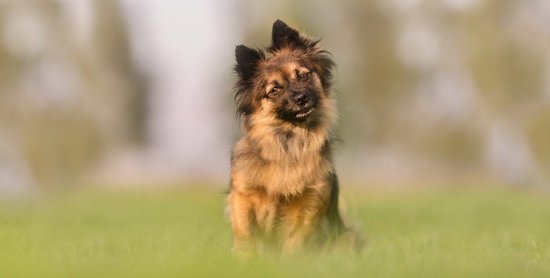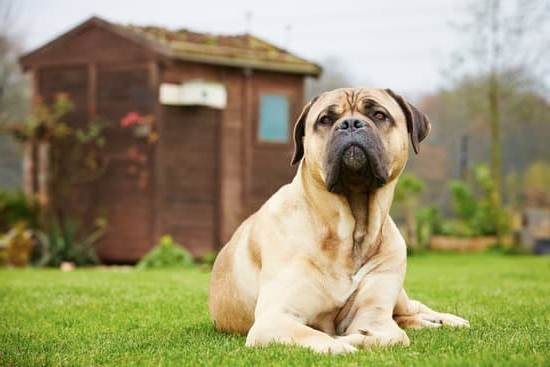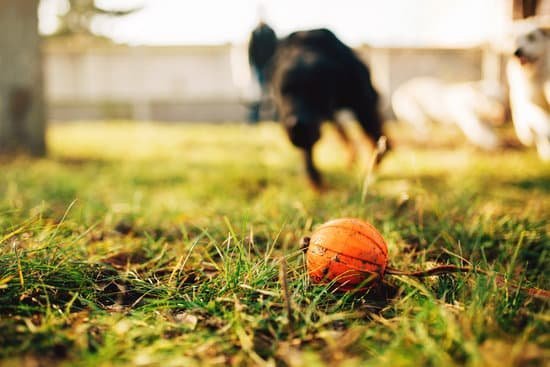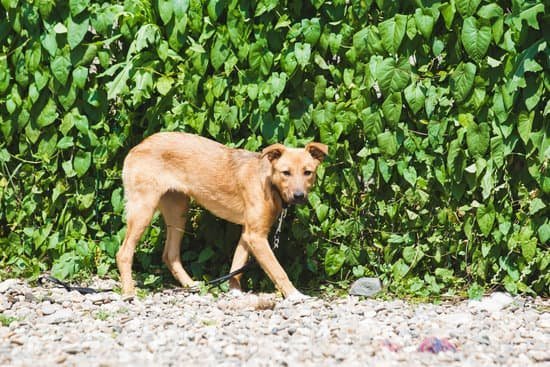Potty training is an essential aspect of raising a dog, and doing it right can make the difference between a well-behaved pet and constant frustration. In this blog post, we will discuss the common mistakes to avoid when potty training a dog. From ignoring a consistent schedule to neglecting positive reinforcement, we will cover all the things you should not do when it comes to potty training your furry friend.
Potty training is more than just teaching your dog where to relieve themselves; it’s about establishing good habits and preventing future behavior issues. By avoiding these common mistakes, you can set your dog up for success and create a positive potty training experience for both you and your pet.
In the following sections, we will dive into specific pitfalls to avoid, such as punishing accidents, using the wrong type of training pads, and not providing enough opportunities for your dog to go outside. We will also discuss the importance of consistency in training methods and the power of positive reinforcement in fostering good potty habits. So, let’s jump in and explore what not to do when potty training a dog.
Ignoring a Consistent Schedule
When it comes to potty training your dog, one of the most important things to avoid is ignoring a consistent schedule. Dogs thrive on routine, and having a consistent potty schedule is crucial for successful training. Not sticking to a regular schedule can confuse your dog and make it harder for them to understand where and when they should go.
To create a consistent potty schedule for your dog, it’s important to establish set times for bathroom breaks. This includes taking them out first thing in the morning, after meals, before bedtime, and at regular intervals throughout the day. By doing so, you are teaching your dog when they should expect to go outside and preventing accidents indoors.
Additionally, be sure to monitor their water intake and take note of how long it takes for food to pass through their system. Understanding these factors will help you anticipate when your dog will need to go outside. Finally, consistency is key in reinforcing the schedule. It’s important that all family members or anyone involved in caring for your dog follows the same routine.
| Tip | Description |
|---|---|
| Set specific times | Determine specific times for bathroom breaks based on your dog’s routine and needs. |
| Monitor water intake | Keep track of when your dog drinks water in relation to their potty breaks. |
| Consistency | Ensure everyone involved in caring for the dog sticks to the same schedule. |
Punishing Accidents
When potty training a dog, one of the most common mistakes to avoid is punishing accidents. Dogs don’t understand punishment in the same way that humans do, and it can actually have a negative impact on their potty training progress. Instead of scolding or punishing your dog for accidents, it’s important to use positive reinforcement to encourage good behavior.
Punishing your dog for having an accident can create anxiety and fear, which may lead to even more accidents in the future. Dogs thrive on positive reinforcement, so it’s crucial to focus on rewarding them for going potty in the appropriate place rather than punishing them for mistakes. When accidents do happen, it’s best to simply clean up the mess without making a fuss and continue with the training process in a positive manner.
Instead of punishment, consider using alternative methods for addressing accidents in a positive way. For example, you can use a cue word or phrase when your dog goes potty outside and then reward them with treats or praise.
This will help your dog understand what is expected of them and reinforce good potty habits without causing any stress or confusion. By focusing on positive reinforcement rather than punishment, you can set your dog up for successful potty training and strengthen the bond between you and your furry friend.
Using the Wrong Type of Training Pads
When it comes to potty training your dog, using the right type of training pads is essential for success. Many dog owners make the mistake of using the wrong type of training pads, which can hinder the potty training process. In this section, we will discuss the different types of training pads available and provide tips on choosing the right ones for your dog’s needs.
Different Types of Training Pads
There are various types of training pads available in the market, including disposable pads, reusable pads, scented pads, and grass-like patches. Disposable pads are convenient for easy cleanup, while reusable pads are more eco-friendly. Scented pads can attract dogs to use them for potty breaks, and grass-like patches mimic outdoor surfaces for a more natural feel. It’s essential to consider your dog’s preferences and needs when choosing the right type of training pad.
Tips on Choosing the Right Training Pads
When selecting training pads for your dog, consider factors such as absorbency, size, and odor control. Opt for high-absorbency pads to prevent leaks and messes in your home. Additionally, choose a size that suits your dog’s breed and ensure that the pad has odor-neutralizing properties to keep your home smelling fresh. It’s also beneficial to offer a variety of pad types to see which one works best for your dog.
By understanding the different types of training pads available and choosing the most suitable option for your dog, you can set them up for successful potty training without facing unnecessary challenges related to inappropriate pad usage.
Not Supervising Your Dog
It is crucial to closely monitor your dog during potty training to prevent accidents and reinforce good behavior. Not supervising your dog can lead to missed opportunities for training and can delay the potty training process. Here are some important tips for ensuring that you effectively supervise your dog during potty training:
- Set a consistent schedule for potty breaks: Establishing a routine for when and where your dog should go to the bathroom will help you anticipate when they need to relieve themselves.
- Use crate training: When you cannot directly supervise your dog, keeping them in a crate can help prevent accidents and reinforce the idea of holding it until they are taken outside.
- Keep an eye on body language: Watch for signs that your dog needs to go, such as sniffing or circling, and promptly take them outside when these behaviors occur.
By closely supervising your dog during potty training, you can effectively guide them towards success and minimize accidents indoors. Consistency and attentiveness are key factors in helping your dog learn proper potty habits.
Remember that every dog learns at their own pace, so it’s important to remain patient and persistent throughout the training process. With careful supervision and positive reinforcement, you can help your furry friend become fully potty trained in no time.
Not Providing Enough Opportunities to Go Outside
When it comes to potty training a dog, one common mistake that many owners make is not providing enough opportunities for their furry friend to go outside and relieve themselves. This can lead to accidents in the house and hinder the training process. Dogs, especially puppies, have small bladders and may need to go outside frequently, so it’s essential to create ample opportunities for them to do so.
One of the key factors in successful potty training is understanding your dog’s bathroom needs. Puppies, for example, may need to go outside as often as every 30 minutes to an hour, especially after eating, drinking, or playing. As they get older, they will be able to hold it for longer periods, but it’s still important to provide regular outdoor breaks. Additionally, adult dogs also need consistent potty breaks throughout the day.
To avoid the mistake of not providing enough opportunities for your dog to go outside, it’s crucial to establish a routine that includes regular potty breaks. This means taking your dog out first thing in the morning, after meals, before bedtime, and several times throughout the day.
It’s also important to pay attention to your dog’s behavior and look for signs that they may need to go outside, such as sniffing around or circling in a specific spot.
Furthermore, creating a designated potty area in your yard can help reinforce good bathroom habits. By consistently bringing your dog to the same spot each time they need to relieve themselves, you can establish a routine and encourage them to do their business in that location. Ultimately, by providing ample opportunities for your dog to go outside and reinforcing positive behaviors, you can set them up for success in their potty training journey.
Inconsistency in Training Methods
Consistency is key when it comes to potty training your dog. Using different methods or constantly changing your approach can confuse your pet and hinder their progress. Here are some tips on how to avoid inconsistency in training:
- Stick to one method: Whether you choose crate training, paper training, or a designated outdoor area, pick one method and stick to it. Mixing different approaches can lead to confusion for your dog.
- Communicate with everyone involved: If multiple people are helping with the potty training process, make sure everyone is on the same page. Consistency in commands and routines is essential for successful training.
- Be patient and persistent: It may take time for your dog to fully grasp the potty training process. Stick with the chosen method and be consistent with your expectations and praise.
Remember, consistency is crucial for effective potty training. By sticking to one method and communicating with all parties involved, you can help your dog successfully learn where and when to go potty.
With dedication and perseverance, you can overcome this challenge without feeling frustrated or disappointed alongside learning what not to do when potty training a dog.
Neglecting Positive Reinforcement
When it comes to potty training your dog, positive reinforcement is key to successfully teaching them where and when to go potty. Neglecting positive reinforcement can lead to confusion and frustration for your furry friend, making the training process much more challenging than it needs to be.
The Power of Positive Reinforcement
Understanding the Power of Positive Reinforcement
Positive reinforcement involves rewarding your dog for exhibiting the desired behavior, in this case, going potty in the designated area. When your dog understands that good things happen when they go in the right spot, they will be more inclined to continue doing so.
Whether it’s through treats, praise, or playtime, positive reinforcement creates a positive association with going potty in the appropriate place. This not only accelerates the learning process but also strengthens the bond between you and your pet.
Incorporating Rewards and Praise Into Potty Training
To effectively incorporate positive reinforcement into potty training, ensure that you have plenty of small, tasty treats on hand. Every time your dog successfully goes potty in the designated area, immediately reward them with a treat and plenty of enthusiastic praise.
Consistency is key when using positive reinforcement – be sure to offer rewards and praise every single time your dog goes potty where they’re supposed to. Over time, they will come to associate this behavior with positive outcomes and will be motivated to continue doing so.
By neglecting positive reinforcement during potty training, you may inadvertently make the process more difficult for both yourself and your pet. Remember that patience, consistency, and plenty of encouragement go a long way in effectively teaching your dog where and when to go potty.
Conclusion
In conclusion, potty training a dog can be a challenging but rewarding process. As highlighted throughout this blog post, there are several common mistakes to avoid when embarking on this training journey with your furry friend. Ignoring a consistent schedule, punishing accidents, using the wrong type of training pads, not supervising your dog, neglecting positive reinforcement, and other missteps can hinder the progress of potty training. However, with patience and persistence, these pitfalls can be avoided.
It’s important for dog owners to remember that potty training takes time and dedication. By staying consistent with a potty schedule, providing ample opportunities for outdoor breaks, closely supervising their dog, and utilizing positive reinforcement techniques, they can set their pets up for success in the long run. The key is to be patient and understanding while also being firm in establishing good habits.
Ultimately, the bond between a dog and its owner is strengthened through effective communication and understanding during the potty training process. By being mindful of what not to do when potty training a dog and focusing on positive reinforcement and consistency instead, pet owners can cultivate a strong relationship with their beloved furry companions while teaching them proper potty etiquette. So remember, patience is key as you embark on this important aspect of your pet’s care and well-being.
Frequently Asked Questions
How Do You Properly Potty Train a Dog?
Properly potty training a dog requires consistency, positive reinforcement, and patience. Take your dog outside frequently, especially after eating or drinking, and reward them when they eliminate in the designated spot.
Should I Punish My Puppy for Potty Accidents?
Punishing a puppy for potty accidents is not recommended as it can lead to fear and anxiety. Instead, focus on preventing accidents by closely supervising the puppy and providing plenty of opportunities to go outside.
Should I Limit My Dogs Water While Potty Training?
It’s important to provide an adequate amount of water for your dog, even during potty training. Limiting water intake can lead to dehydration and other health issues. Instead, focus on taking your dog outside regularly to minimize accidents indoors.

Welcome to the blog! I am a professional dog trainer and have been working with dogs for many years. In this blog, I will be discussing various topics related to dog training, including tips, tricks, and advice. I hope you find this information helpful and informative. Thanks for reading!





